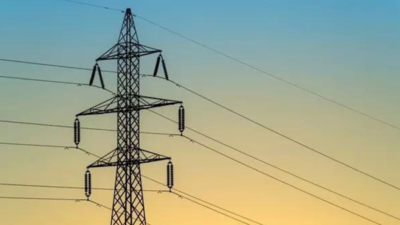BENGALURU: Why are several localities in Bengaluru and tier-2 cities facing frequent power disruptions when Karnataka is supposed to a ‘power-surplus’ state?
This is a question many have been shooting to the state energy department as they battle soaring temperatures and exam-related anxiety. While the govt maintains that there is no ‘load-shedding’ declared, officials admit they are seeing more complaints pertaining to power outages.
When TOI tossed the same poser to energy minister KJ George, he pointed to the rise in power consumption and the impact it has on the existing transmission infrastructure. Admitting the challenges in managing the summer loads, George said: “Karnataka has no shortage of power during solar hours (daytime), it is only during the peak hours that we struggle to meet the demand.”
The energy department, in a presentation made on Monday, identified three reasons for interruptions in power supply: Overloading of transformers leading to frequent failures, maintenance work of the transmission and distribution assets, and technical constraints pertaining to transmission and distribution systems at the field level.
The state has witnessed a surge in demand for power, with the peak demand exceeding 18,000 MW in the last two months; it touched a record 18,395 MW on March 7. Going forward, the demand is anticipated to touch 18,500 MW in April. Interestingly, Karnataka has an installed capacity of 34,000 MW — combining thermal, hydroelectric, and renewable energy resources.
On the reasons for the rise in consumption, Pankaj Kumar Pandey, MD of Karnataka Power Transmission Corporation, said the current year summer challenges are due to the increasing agricultural load. “Buoyed by the availability of water, farmers have taken to cultivating a third crop in most of the command areas. While there was a 30% rise in rabi crop area across Karnataka, the agricultural activities shot up by 15% in major districts such as Tumakuru, Mandya, Vijayapura, and Belagavi. This also resulted in increased usage of irrigation pumpsets to water the crops in the simmering heat,” he explained.
Currently, the energy department has been supplying three-phase power for seven hours in a staggered way during day and night hours. However, farmers have been demanding a supply of three-phase power during the daytime, fearing attacks by wild animals during night hours. Several MLAs have also pressurised the state govt to supply power during daytime, adding to the existing load on the grid by urban centres including Bengaluru. Similarly, industrial activities have also gained momentum across Karnataka. “The robust industrial growth has also pushed industrial energy demand by 7.5%. The soaring mercury levels in urban pockets have also contributed to the existing load due to an increase in air conditioning load,” another official explained.
Intermittency issue
While more than 50% of Karnataka’s energy is met through renewable sources, the state is unable to store the excess power generated during daytime. Gaurav Gupta, additional chief secretary, energy department, said, “The intermittency is the major problem when it comes to solar and wind. Out of the 9,000-plus MW of solar power, we are getting only 6,800 MW, and out of 6,500-plus MW of wind power, we are generating only 1,000 MW. At times, there will be enough generation, but there is hardly any infrastructure to store and use it later. Hence, we’re working steadfastly in building battery-storing capacity at multiple locations.”
Pandey revealed that several infrastructural works are in progress to overcome the technical constraints in the transmission and distribution system. “We have been changing transmission lines with higher capacity and upgrading our substations and receiving stations to handle the increasing load. Overloading transformers is yet another concern, and we are equally addressing them by replacing them with better performance transformers. While a few will be completed in a few months’ duration, the others will take a year or two for completion, affecting transmission during peak hours,” he pointed out.


